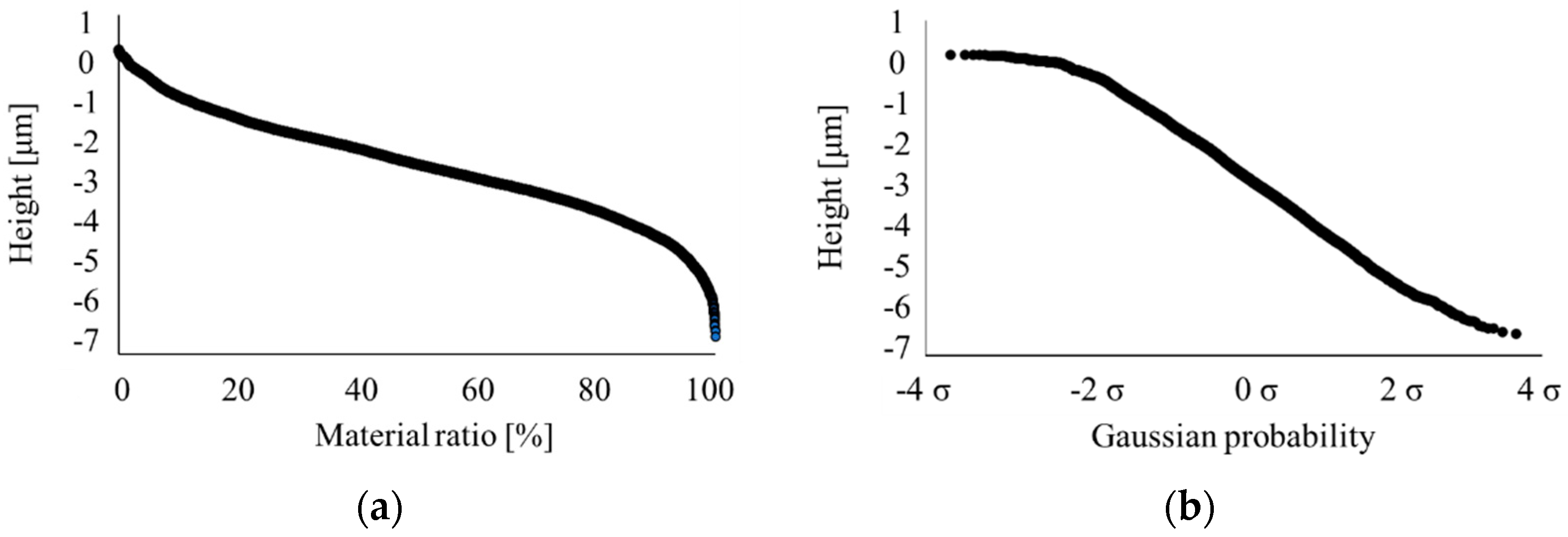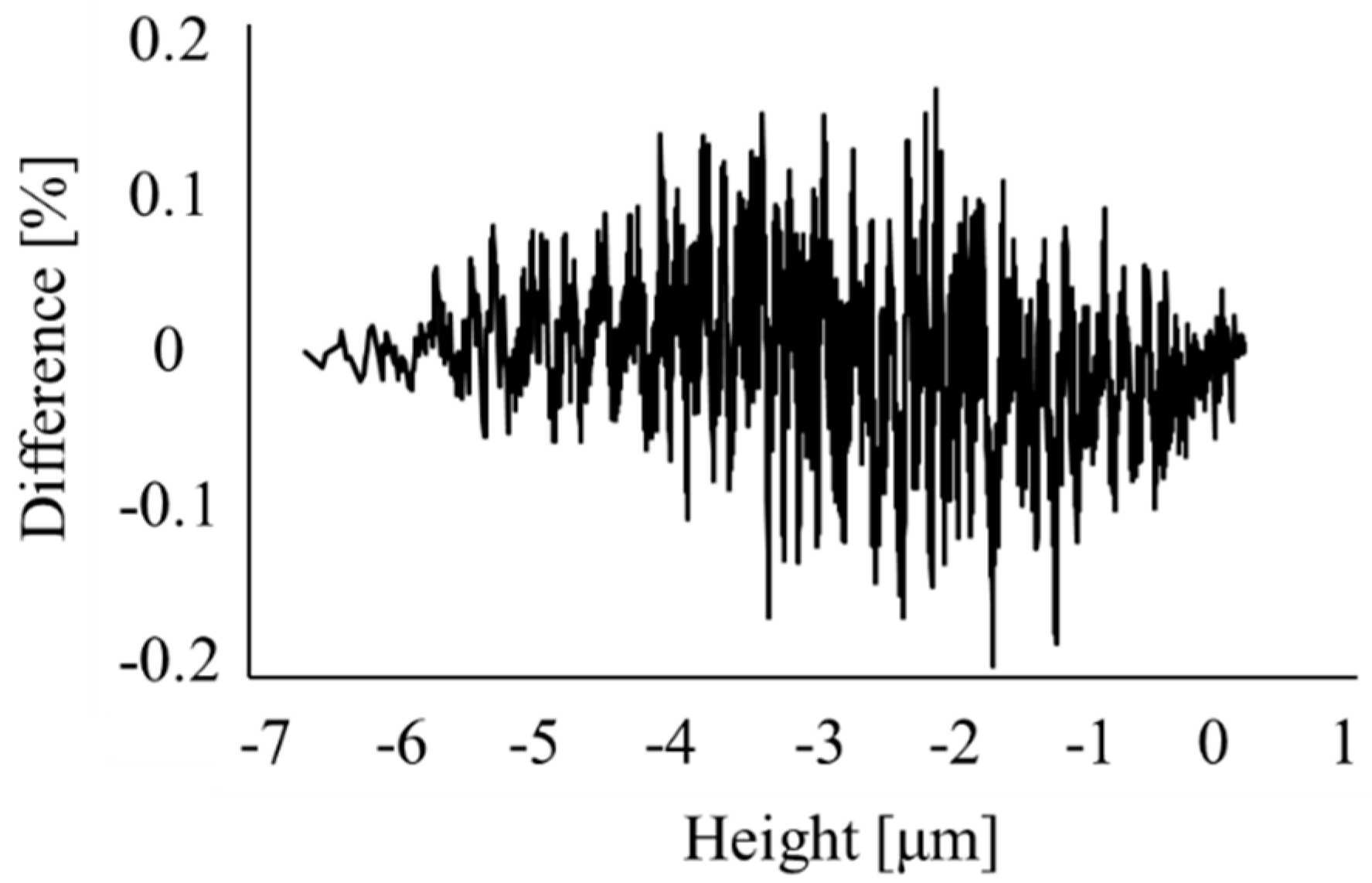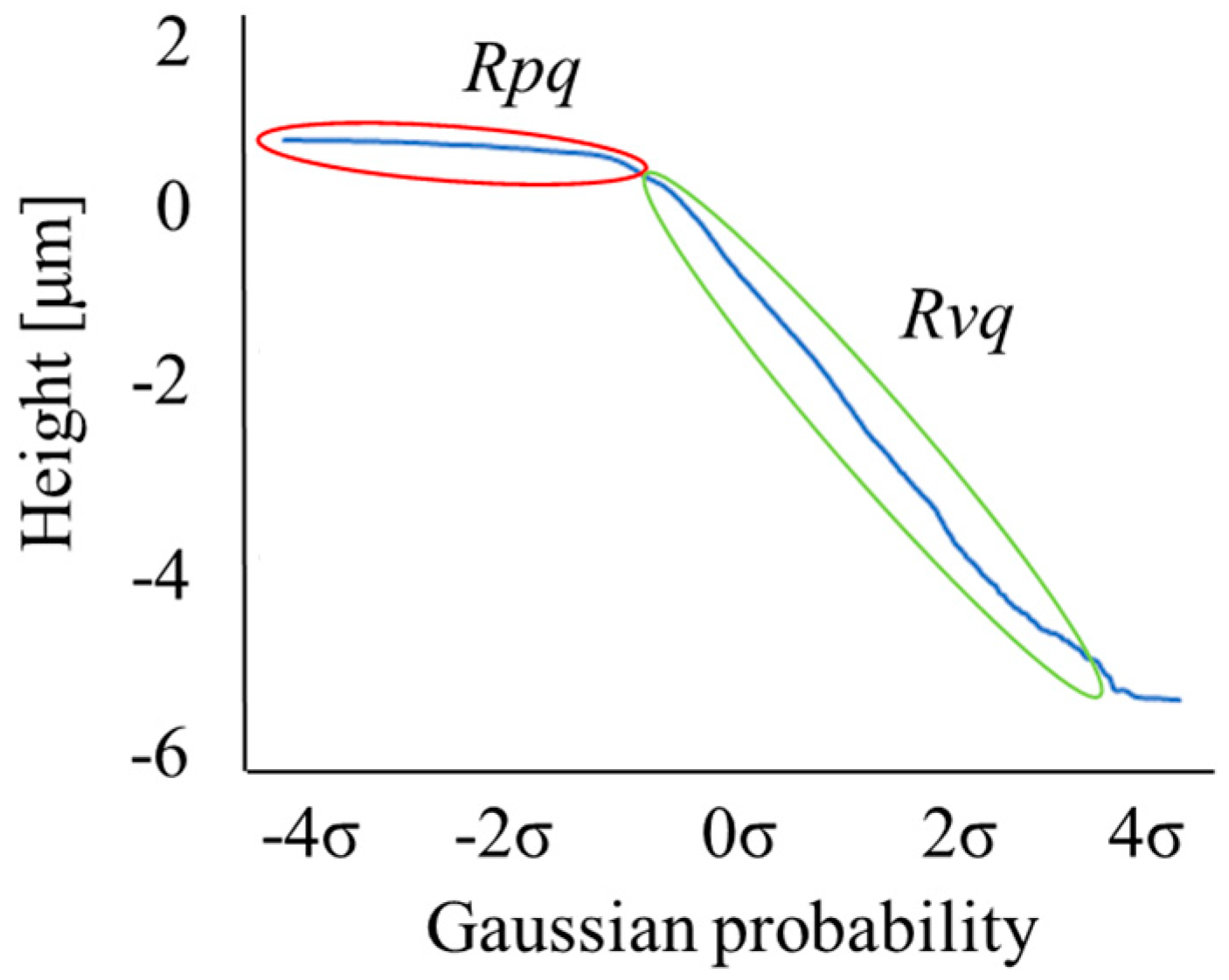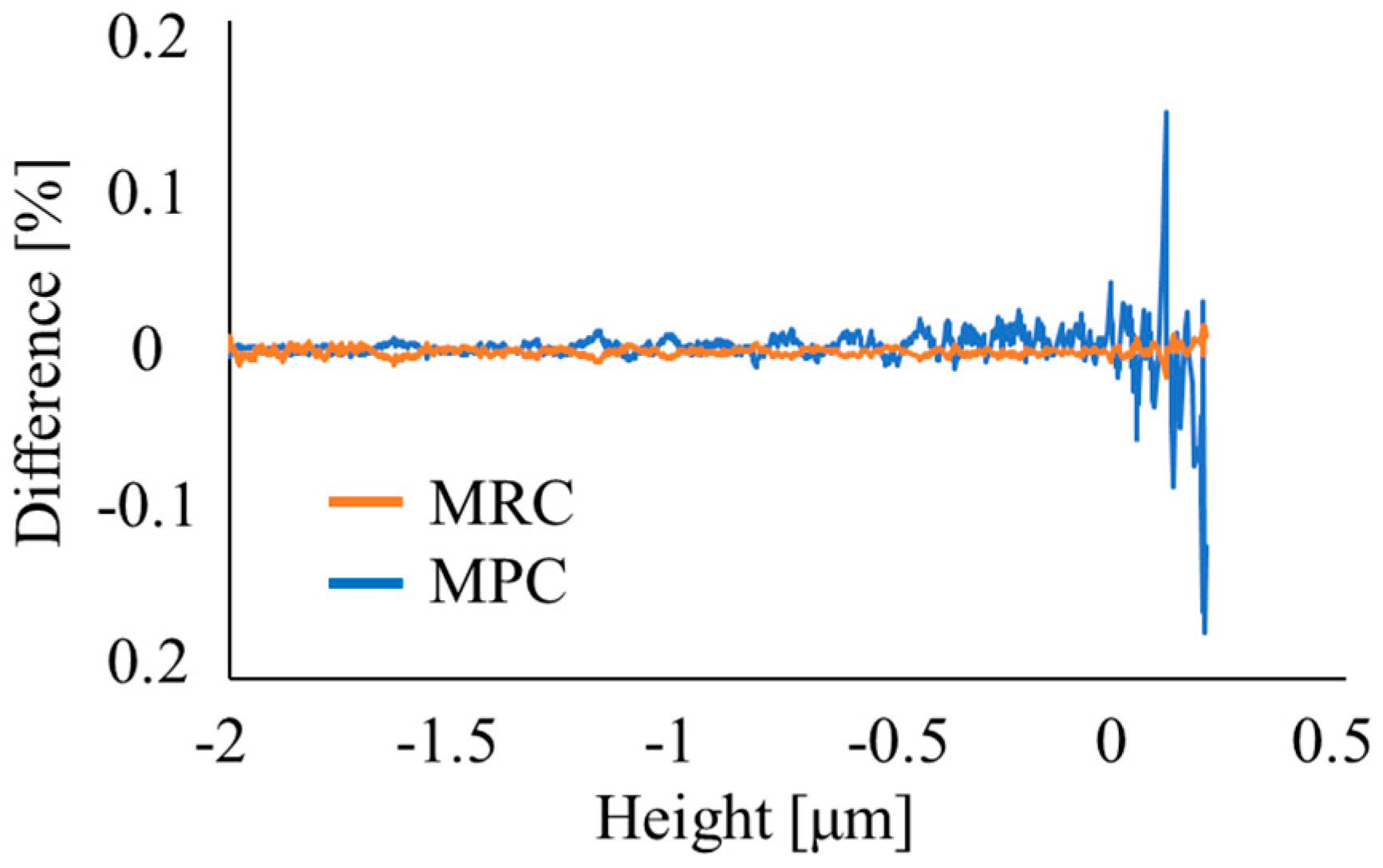Study on Affect by Calculation Algorithm for Material Probability Curve to Roughness Parameters of Plateau Surface †
Abstract
1. Introduction
2. Errors Owing to the MRC Calculation Method
- Set the slice height;
- Calculate the intersections of the roughness curve and the slice height;
- Calculate the length of the material part between intersections;
- Calculate the sum of the lengths of the material parts;
- Calculate the material ratio MR by substituting the sum of the lengths of the material parts L and evaluated length E into Equation (1).
- Sort the roughness data in descending order;
- Calculate the material ratio MR by substituting the evaluated length E, rank N, and pitch Δx into Equation (2).
3. Influence on the Evaluation Method for Plateau Surfaces
- Convert the roughness curve to an MRC;
- Convert the MRC to an MPC;
- Fit straight lines to the plateau and valley regions on the MPC.
4. Experiments and Results
5. Conclusions
Author Contributions
Funding
Institutional Review Board Statement
Informed Consent Statement
Conflicts of Interest
References
- Pawlus, P.; Reizer, R.; Wieczorowski, M.; Krolczyk, G. Material ratio curve as information on the state of surface topography-A review. Precis. Eng. 2020, 65, 240–258. [Google Scholar] [CrossRef]
- Yoshida, I.; Tsukada, T.; Arai, Y. Characterization of Three-Stratum Surface Textures. J. Jpn. Soc. Tribol. 2008, 53, 99–111. [Google Scholar]
- ISO 13565-2:1996; Geometrical Product Specifications (GPS)-Surface Texture: Profile Method; Surfaces Having Stratified Functional Properties-Part 2: Height Characterization Using the Linear Material Ratio Curve (JIS B 0671-2: 2002). ISO: Geneva, Switzerland, 1996.
- Arai, Y.; Yoshida, I.; Tsukada, T. A Method to Derive the Material Ratio Curve of Surface Texture. Proc. JSPE Semest. Meet. 2007, 2007A, 703–704. (In Japanese) [Google Scholar]
- ISO 4287:1997; Geometrical Product Specifications (GPS)-Surface Texture: Profile Method-Terms, Definitions and Surface Texture Parameters (JIS B 0601: 2013). ISO: Geneva, Switzerland, 1997.
- Okamoto, J.; Nakayama, K.; Sato, M. Introduction to Tribology, 1st ed.; Saiwai Shobo: Tokyo, Japan, 1990; pp. 10–11. (In Japanese) [Google Scholar]
- Machida, H.; Yoshida, I. Proposal of Calculating Method for Material Ratio Curve of Suface Texture. In Proceedings of the 5th International Conference on Science of Technology Innovation, Nagaoka University of Technology, Niigata, Japan, 30–31 October 2020; STI-9-31. p. 80. [Google Scholar]
- Machida, H.; Nagai, S.; Yoshida, I. Study on a Computational Algorithm for Material Ratio of Surface Texture. In Proceedings of the 6th International Conference on “Science of Technology Innovation”, Nagaoka University of Technology, Niigata, Japan, 22 October 2021; STI-9-28. p. 104. [Google Scholar]
- ISO 21920-2:2021; Geometrical Product Specifications (GPS)—Surface Texture: Profile—Part 2: Terms, Definitions and Surface Texture Parameters. ISO: Geneva, Switzerland, 2021.
- Machida, H.; Yoshida, I.; Kondo, Y. Proposal of Computational Algorithm for Calculating Material Ratio of Surface Texture. In Proceedings of the ASEC2021, Online, 15–31 October 2021. [Google Scholar]
- Yoshida, I. Surface Roughness-Part 2, How to Use and Clues of the Surface Texture Parameters. J. Jpn. Soc. Precis. Eng. 2013, 79, 405–409. [Google Scholar] [CrossRef]




| Rpq in Slice Method [μm] | Rpq in Sort Method [μm] | |
|---|---|---|
| Sample 1 | 0.29 | 0.29 |
| Sample 2 | 0.25 | 0.25 |
| Sample 3 | 0.07 | 0.07 |
| Sample 4 | 0.06 | 0.06 |
Disclaimer/Publisher’s Note: The statements, opinions and data contained in all publications are solely those of the individual author(s) and contributor(s) and not of MDPI and/or the editor(s). MDPI and/or the editor(s) disclaim responsibility for any injury to people or property resulting from any ideas, methods, instructions or products referred to in the content. |
© 2022 by the authors. Licensee MDPI, Basel, Switzerland. This article is an open access article distributed under the terms and conditions of the Creative Commons Attribution (CC BY) license (https://creativecommons.org/licenses/by/4.0/).
Share and Cite
Nagai, S.; Sakakibara, R.; Yoshida, I. Study on Affect by Calculation Algorithm for Material Probability Curve to Roughness Parameters of Plateau Surface. Eng. Proc. 2023, 31, 79. https://doi.org/10.3390/ASEC2022-13795
Nagai S, Sakakibara R, Yoshida I. Study on Affect by Calculation Algorithm for Material Probability Curve to Roughness Parameters of Plateau Surface. Engineering Proceedings. 2023; 31(1):79. https://doi.org/10.3390/ASEC2022-13795
Chicago/Turabian StyleNagai, Sho, Ryo Sakakibara, and Ichiro Yoshida. 2023. "Study on Affect by Calculation Algorithm for Material Probability Curve to Roughness Parameters of Plateau Surface" Engineering Proceedings 31, no. 1: 79. https://doi.org/10.3390/ASEC2022-13795
APA StyleNagai, S., Sakakibara, R., & Yoshida, I. (2023). Study on Affect by Calculation Algorithm for Material Probability Curve to Roughness Parameters of Plateau Surface. Engineering Proceedings, 31(1), 79. https://doi.org/10.3390/ASEC2022-13795






